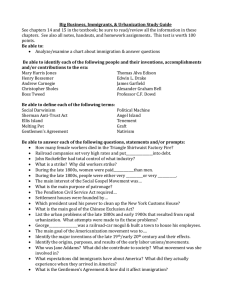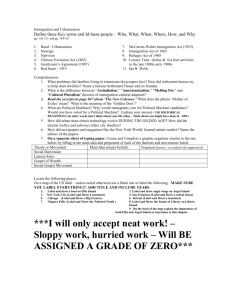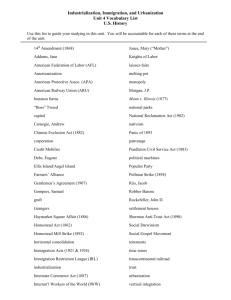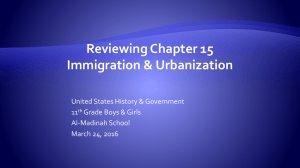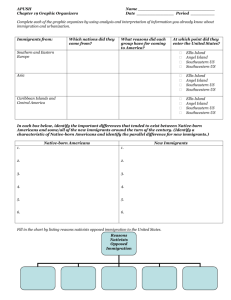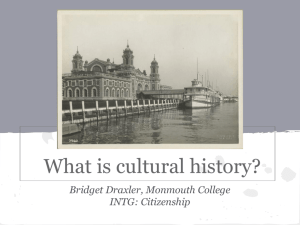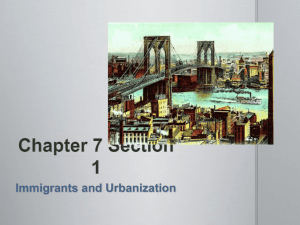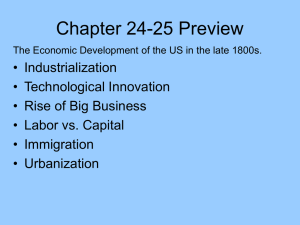Syllabus VIII
advertisement
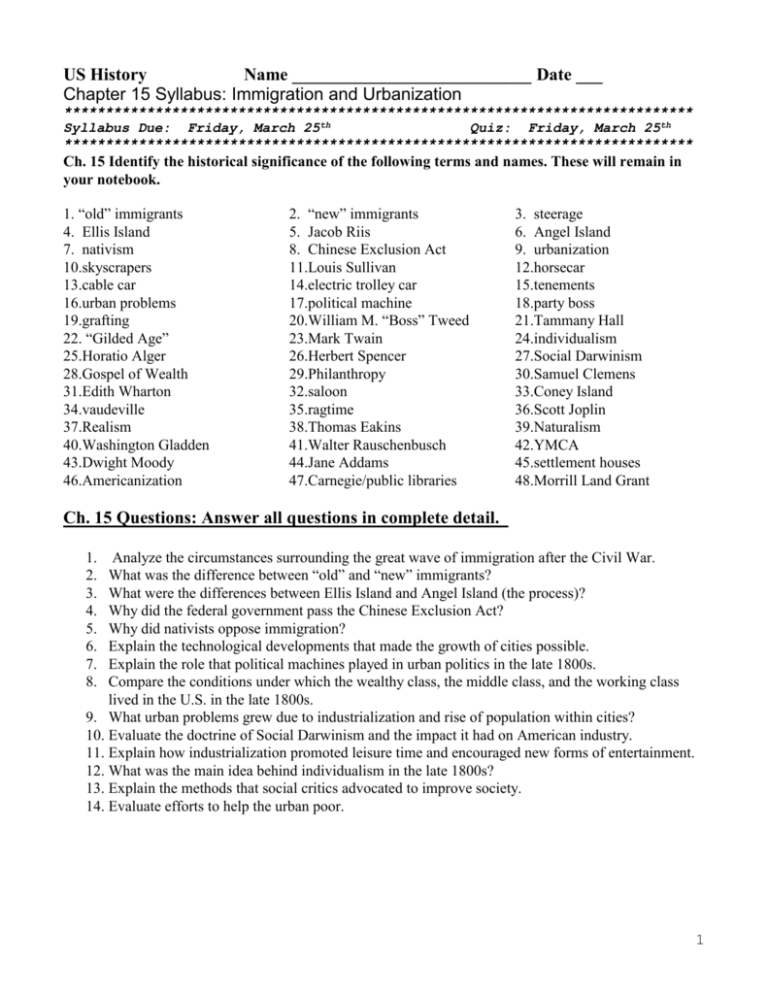
US History Name ___________________________ Date ___ Chapter 15 Syllabus: Immigration and Urbanization **************************************************************************** Syllabus Due: Friday, March 25th Quiz: Friday, March 25th **************************************************************************** Ch. 15 Identify the historical significance of the following terms and names. These will remain in your notebook. 1. “old” immigrants 4. Ellis Island 7. nativism 10.skyscrapers 13.cable car 16.urban problems 19.grafting 22. “Gilded Age” 25.Horatio Alger 28.Gospel of Wealth 31.Edith Wharton 34.vaudeville 37.Realism 40.Washington Gladden 43.Dwight Moody 46.Americanization 2. “new” immigrants 5. Jacob Riis 8. Chinese Exclusion Act 11.Louis Sullivan 14.electric trolley car 17.political machine 20.William M. “Boss” Tweed 23.Mark Twain 26.Herbert Spencer 29.Philanthropy 32.saloon 35.ragtime 38.Thomas Eakins 41.Walter Rauschenbusch 44.Jane Addams 47.Carnegie/public libraries 3. steerage 6. Angel Island 9. urbanization 12.horsecar 15.tenements 18.party boss 21.Tammany Hall 24.individualism 27.Social Darwinism 30.Samuel Clemens 33.Coney Island 36.Scott Joplin 39.Naturalism 42.YMCA 45.settlement houses 48.Morrill Land Grant Ch. 15 Questions: Answer all questions in complete detail. 1. 2. 3. 4. 5. 6. 7. 8. Analyze the circumstances surrounding the great wave of immigration after the Civil War. What was the difference between “old” and “new” immigrants? What were the differences between Ellis Island and Angel Island (the process)? Why did the federal government pass the Chinese Exclusion Act? Why did nativists oppose immigration? Explain the technological developments that made the growth of cities possible. Explain the role that political machines played in urban politics in the late 1800s. Compare the conditions under which the wealthy class, the middle class, and the working class lived in the U.S. in the late 1800s. 9. What urban problems grew due to industrialization and rise of population within cities? 10. Evaluate the doctrine of Social Darwinism and the impact it had on American industry. 11. Explain how industrialization promoted leisure time and encouraged new forms of entertainment. 12. What was the main idea behind individualism in the late 1800s? 13. Explain the methods that social critics advocated to improve society. 14. Evaluate efforts to help the urban poor. 1 COMPETENCY GOAL 5: Becoming an Industrial Society (1877-1900) - The learner will describe innovations in technology and business practices and assess their impact on economic, political, and social life in America. Objectives 5.01 Evaluate the influence of immigration and rapid industrialization on urban life. 5.02 Explain how business and industrial leaders accumulated wealth and wielded political and economic power. 5.03 Assess the impact of labor unions on industry and the lives of workers. 5.04 Describe the changing role of government in economic and political affairs. Chapter 15 Objective To analyze the economic, social, and political effects of immigration and to understand the immigrant experience. 2

